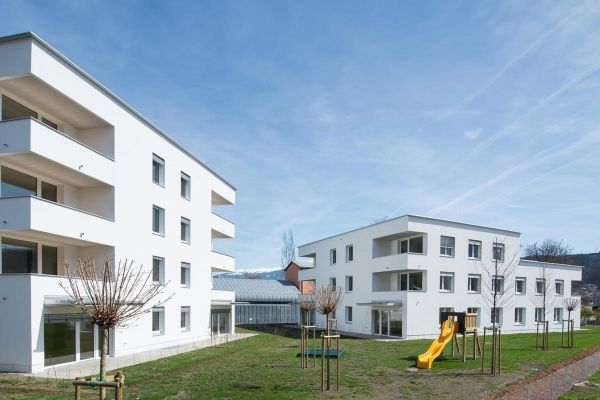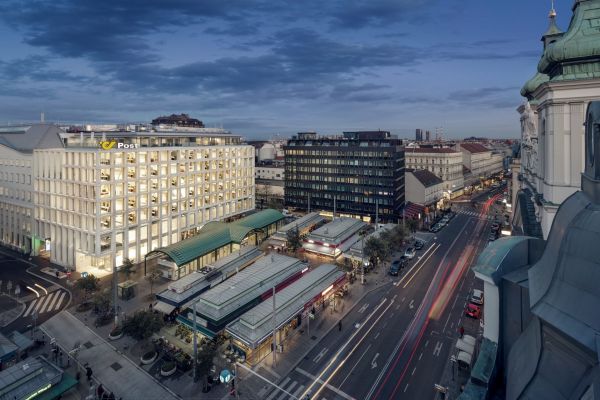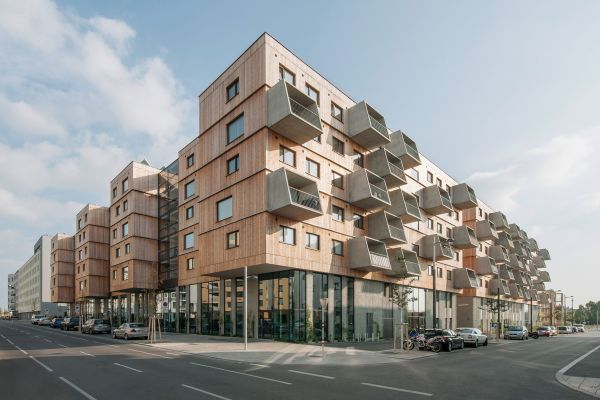IEA HPT Annex 49: Design and integration of heat pumps for nZEB
Short Description
At the end of 2020, all new buildings in the European Union (EU) must be nearly zero-energy buildings (nZEBs) to contribute to the achievement of the EU-CO2 neutrality by 2050.
The most promising HVAC systems must include heat pumps (HPs) and photovoltaic (PV) panels, however, there exist ongoing discussions on the optimal system layout to achieve nZEB thus, the IEA HPT Annex 49 focused on these aspects.
Within the framework of the IEA HPT Annex 49, the various heat pump concepts for the realization of nZEBs were investigated. Herein, the investigation included the heat pump integration together with locally available renewable energy sources for application in nZEBs. In this context, a special focus was on the optimization of the heat pump control. Further, the monitoring results of different heat pumps were analysed for a selected number of projects.
Objectives
The objectives of IEA HPT Annex 49, which were based on the results of Annex 40 „Heat Pumps for Nearly Zero Energy Buildings" were:
- Evaluate and compare definitions of nZEB across the participating countries regarding the impact on building technologies with heat pumps
- Evaluate the design of heat pump systems for different applications in residential or office buildings regarding performance, cost, load match and demand response.
- Refine integration options for building technology with heat pumps in terms of multi-functional operation and needs of integrated system (e.g. source regeneration, supply reheating, back-up cooling, temperature related heat decoupling, etc.)
- Gather experience of monitoring of buildings across different participating countries regarding concepts and technology under different climate and market conditions
- Derive recommendations for integrated heat pump systems as well as heat pump design and control in single nZEB and groups of buildings.
In order to achieve this the Annex 49 was divided into the following 5 Subtasks:
- Task 1. State-of-the-art of definitions and nZEB concepts for single buildings and groups of buildings
- Task 2. System integration options of heat pumps for single buildings and groups of buildings
- Task 3. Technology evaluation and development/Continued field evaluation for nZEB
- Task 4. Design and control of nZEB technologies
- Task 5. Dissemination of results
nZEB implementation in Austria
The Austrian implementation of the EPBD in the current version (2019) does not seem sufficient concerning Austria's and EU's ambitious climate protection goals. The so-called dual path with the method of the total energy efficiency still permits only a moderate quality of the building envelope, especially in single-family houses, losing possible savings required to fulfill the climate protection goals in the buildings sector. In an European comparison, the Austrian nZEB does not seem very ambitious and similar to, for example, Germany (EnEV) as they both are clearly below the requirements of the EU and clearly behind the ambitious definitions from, for instance, Denmark. However, it is difficult to make a direct comparison due to the different boundary conditions and assumptions.
In the framework of IEA HPT Annex 49, a method was developed allowing to compare, in a transparent way, the so-called ambition level (i.e. the comparison of the deviation in terms of lifecycle costs and primary energy requirements for the cost-optimal option) of the different member countries considering different climatic and boundary conditions. Therefore, an exemplary case study of an individual single-family-house with air-water heat pump was developed into simulation models in different simulation tools. The D-A-CH countries and Italy were compared in detail.
Case Studies
Further, in the framework of IEA HPT Annex 49, several case studies showing the integration of heat pumps in nZEBs were investigated and, then, optimized by means of monitoring and simulation results. Herein, the Austrian case studies are:
- NZEB Vögelebichl in Innsbruck, two multi-family houses built according to the Passive House standard and certified as Passive House Plus and aiming at net zero balance for the building services including auxiliary energies and they were extensively monitored and thoroughly simulated.
- The residential building on the site D12 in the "Seestadt Aspern" with 204 subsidised rental apartments, 8 restaurants and other rooms was designed as a wooden construction on reinforced concrete with timber façade. Heat pumps (HP) and solar systems supply heat whereby three different heat sources are utilized for the HPs.
- Results and concepts of the funded project "PEAR" concepts were demonstrated at the Post am Rochus building and the generic approach can be transferred to other buildings, too.
- In the project solSPONGEhigh, various approaches for heat-supply systems based on a heat pump in combination with solar energy (solar thermal or photovoltaics) using thermal activated buildings systems (TABS) were investigated by means of detailed system simulations for different building types.
- The aim of the project COOLSKIN was to design decentralized façade-integrated systems for cooling and heating office spaces, based on a combination of building-integrated photovoltaics and a heat pump.
Conclusions
The case studies demonstrate the good experience with "real" nZEBs in Austria. Very energy efficient buildings with high quality envelopes in combination with heat pumps and onsite renewables can - also given the constraint of affordable living - contribute to major primary energy savings. However, a customized system design and well-dimensioned components together with a well-commissioned control are required to obtain the optimal performance and, thus, maximum primary energy savings.
Project Images
Terms of use: The pictures listed underneath the header “Project Pictures” originate from the projects in the frame of the programmes City of Tomorrow, Building of Tomorrow and the IEA Research Cooperation. They may be used credited for non-commercial purposes under the Creative Commons License Attribution-NonCommercial (CC BY-NC).
Participants
Belgium, Germany, Finnland/Estonia, Norway, Austria, Sweden, Switzerland, USA
Contact Address
Universität Innsbruck
Fabian Ochs, Mara Magni, Elisa Venturi
Technikerstr. 13, 6020 Innsbruck
Tel. ++43 512 507 63603
E-Mail: fabian.ochs@uibk.ac.at
IWT, TU Graz
Andreas Heinz
AIT, Wien
Philip Horn, Tim Selke




